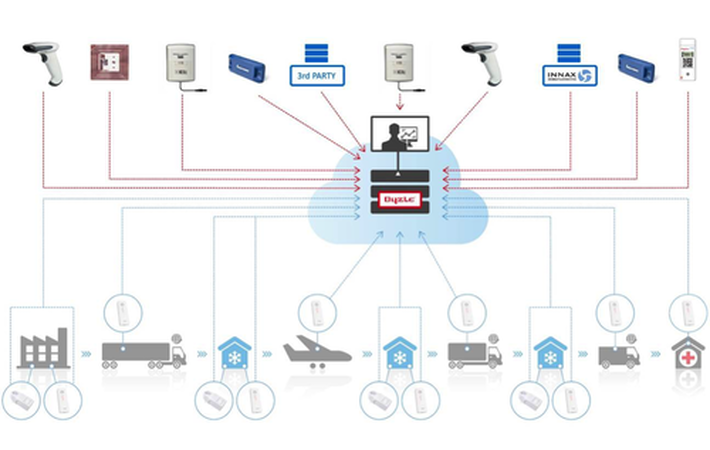
Published on 11/29/2016 | Technology
As highlighted in my previous post, the internet of things (IoT) is not new: our industry may just be talking about its use now, but the technology upon which it is based has been around for a long time, and some companies have been delivering such technology solutions even before it was labelled as IoT.
The scope of IoT spans the entire pharmaceutical supply chain – from manufacturer to pharmacist. However, it is still being considered in a very limited way. Many companies still don’t see the real potential promise of this technology – they might just be looking at it from the viewpoint of having connected devices that simply demonstrate compliance.
Yes it does help provide proof of integrity, but there is so much more that you can do with the goldmine of data that the IoT offers. In this article we explain how IoT is being used now, as well as the potential benefits from better utilization of the data collected.
There are many suppliers today that provide solutions such as temperature, humidity and door sensors on every asset in the pharmaceutical supply chain. These sensors connect to a global mobile network that transmits data to a central database, and a dashboard is often provided with a real-time view of what’s happening in the field.
This technology can be built into in the entire supply chain – from warehouses, trucks and inflight containers, to delivery vans, local hospitals and pharmacies. The main goal, as mentioned earlier, is to deliver temperature information, proof of product quality, real-time alerts of any transgressions outside a given safe range, and proof of compliance.
So we have established that data can help with providing proof of integrity and compliance. However, the dynamics of real-time or ‘live’ data provides significant additional insights into the daily business. It’s also referred to as big data. And as one paper, ‘Big Data Analytics in Supply Chain Management’ suggested at a conference two years ago, big data analytics offers vast prospects in today's business transformation. There is a myriad of premises that big data analytics can play more crucial roles in supply chain management.
The paper concludes that good use of data offers substantial efficiency improvements to existing processes with minor modifications, as well as being able to understand problems functionally in the supply chain. It argues that in order to succeed data should not just be considered as an information asset but as a strategic asset. By doing so, organizations could realize the economic value inherent in the data and the potential to capitalize on it in supporting revenue generating activities.
Take as an example, the monitoring of vaccines in a refrigerator. You see a regular temperature spike which occurs every day at around 8:30 – indicating the opening of the refrigerator door at that time. But say on Friday it happens instead at 9:30. Now, if a process requires rigid time keeping in administering the vaccine, this would certainly flag up an irregularity in the process on the Friday, and would then help to advise relevant staff or remind them of the process requirements.
In another example, continuous measurements can help show the maintenance status of a cooling unit. If there are longer defrosting cycles, this could mean maintenance is needed. The fact that we are able to see this live means we can act in advance to prevent loss later on, or prevent expensive repair bills for when a breakdown eventually occurs, maybe outside office hours.
These kinds of insights can help to increase efficiency or to prevent loss. What’s better is that this data can be combined with track and trace information, and integrated with the order systems, ERP, TMS and WMS, to give proof of GDP and serialization.

It is widely considered that IoT will certainly shake things up in the pharmaceutical supply chain. It will ‘take supply chain visibility to whole new levels’ according to some commentators. And according to a DHL and Cisco report on the IoT in Logisticsproduced in 2015, IoT enables logistics providers to unlock higher levels of operational efficiency, while creating customized, dynamic and automated services for their customers.
The concept of IoT is not just the measurement of one parameter of an asset. Its purpose is to connect an asset so that every vital parameter can be made available (eventually). The business benefits tactically and strategically from harvesting the data that is generated could be significant. In addition, the use of technology networks and components will open up more possibilities with IoT in the future. We’ll cover that as well as the important issue of delivery to the home of the patient in my next post.
This article was originally posted on LinkedIn.